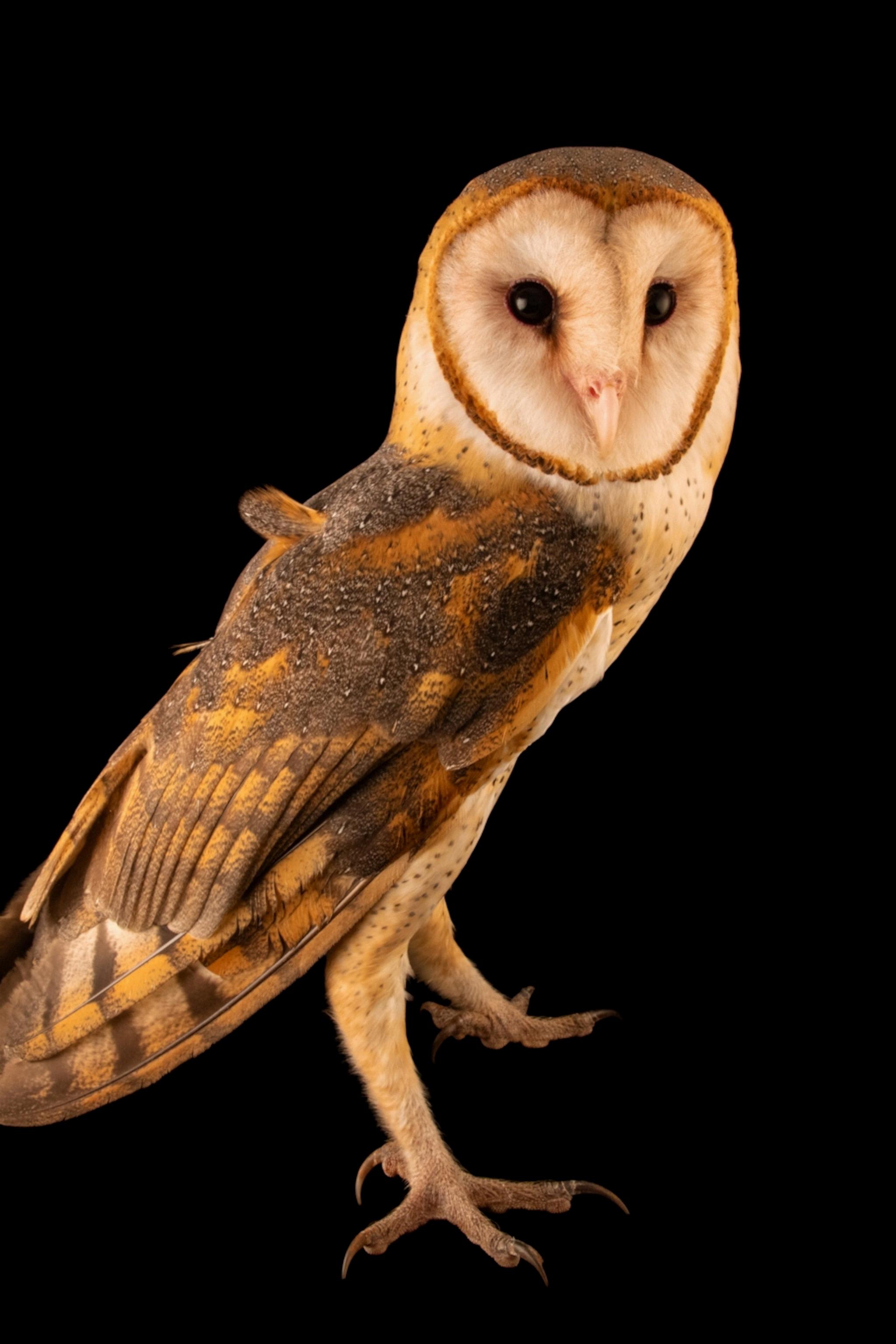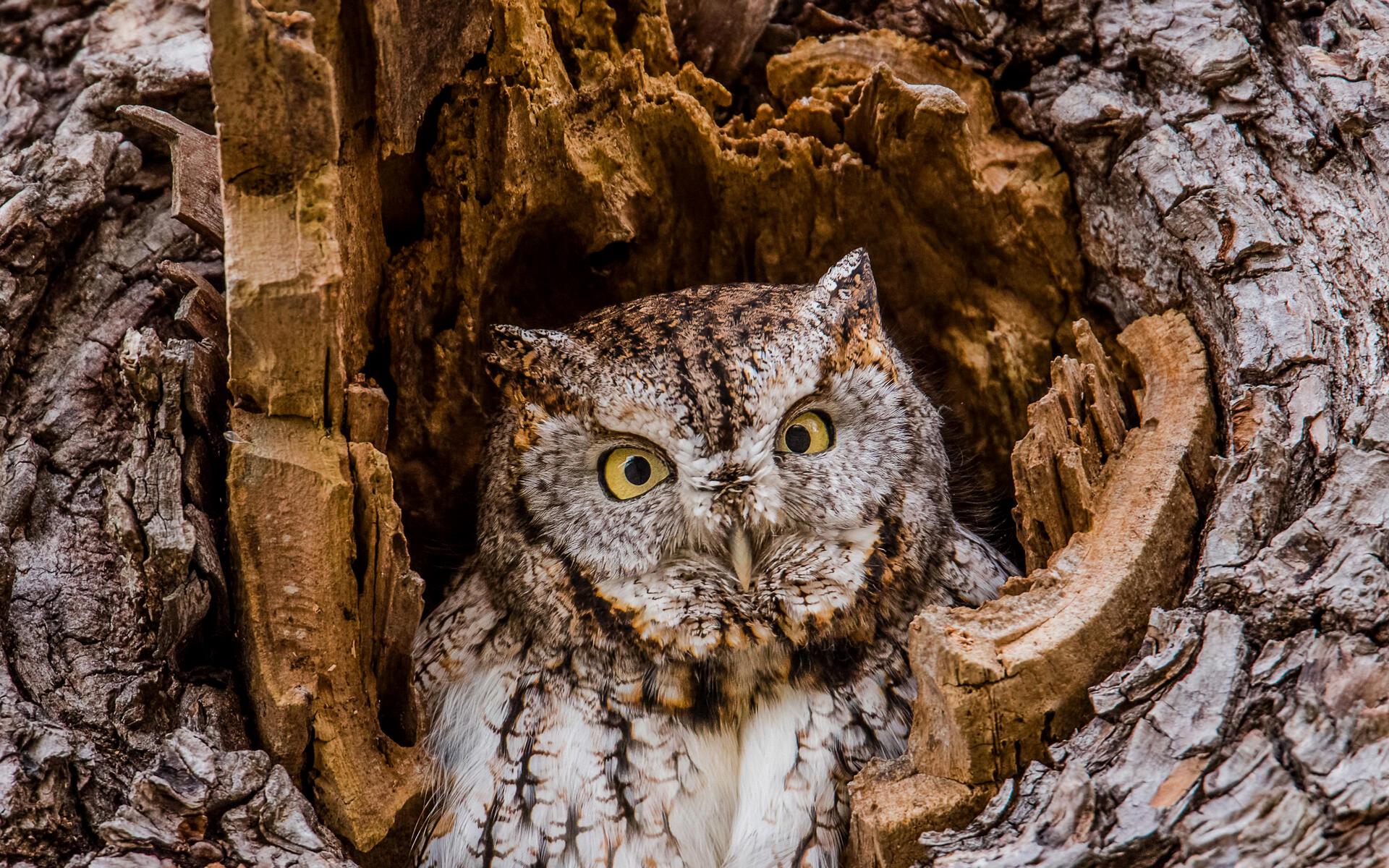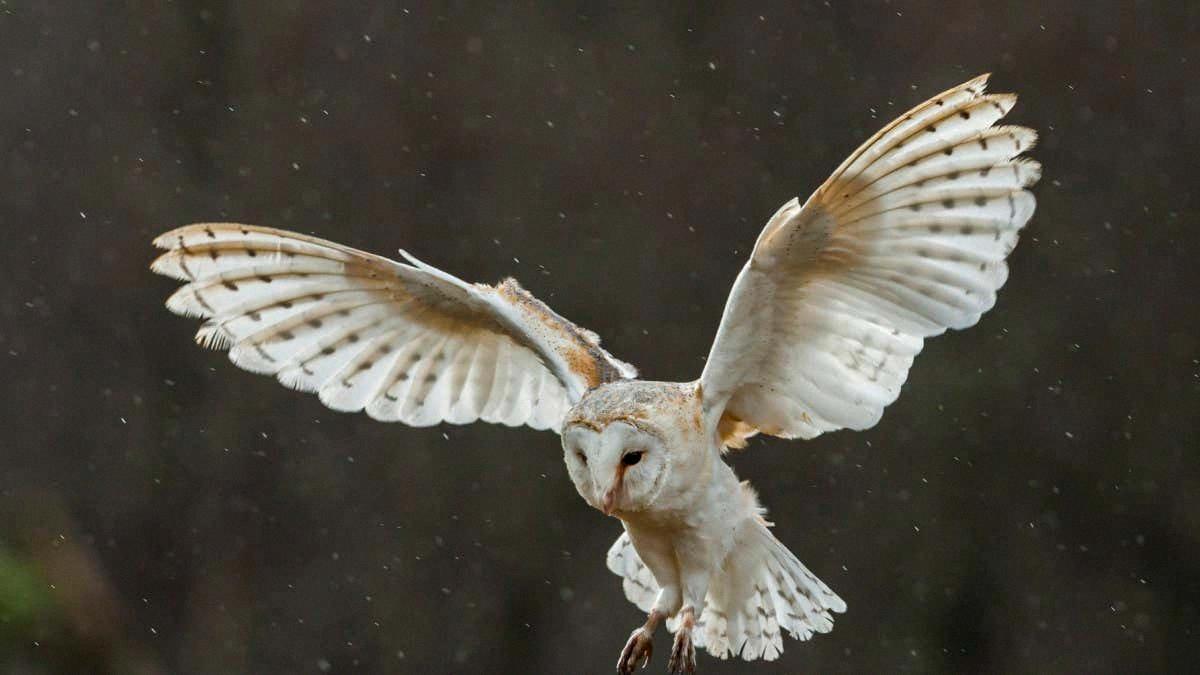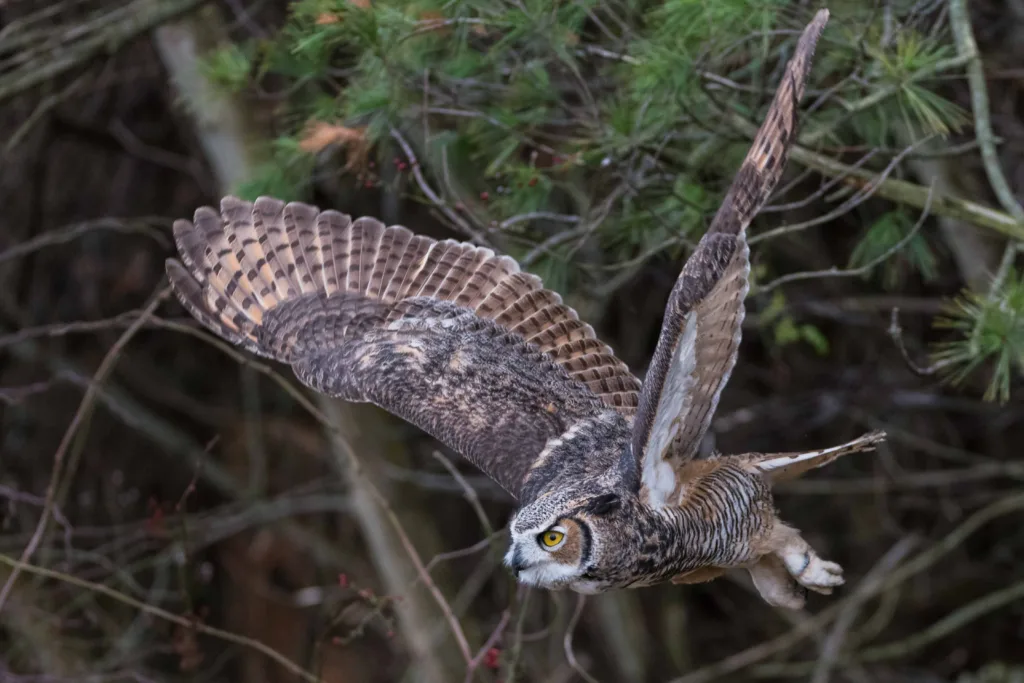Owls are fascinating creatures, known for their unique appearance and hunting skills. But did you know that many owl species also exhibit monogamous behavior?
Firstly, it’s important to note that not all owls mate for life. However, many species do form strong pair bonds that can last for several years, or even for life. One example of a monogamous owl species is the Great Horned Owl. Members of a pair often remain on the same territory year-round and may stay together for at last five years, if not for life. If one member of the pair dies or disappears, the survivor will typically find another mate.
Courtship rituals are an important aspect of owl mating behavior, and pairs will often use the same nest site every year. These rituals can include courtship flights, calls, and offerings of food. For some owl species, the pair bond may last only for the duration of the breeding season, especially if the species is migratory or dispersive.
Interestingly, some research suggests that even monogamous owl pairs may split up if breeding is unsuccessful. In a study conducted in Switzerland, researchers observed barn owls for 24 years and found that although the birds are typically monogamous, they may “divorce” if breeding is not successful. About 25% of barn owls will experience this at some point in their lives.
It’s also worth noting that not all owl species exhibit monogamous behavior. Some species, such as the Burrowing Owl, may form communal nesting sites with multiple females and one male. Additionally, some owl species may mate with multiple partners during a breeding season.
While not all owls mate for life, many species do exhibit monogamous behavior and form strong pair bonds. These bonds are often strengthened through elaborate courtship rituals and the use of the same nest site year after year. And while “divorce” may occur in some cases, owl pairs can remain together for several years, if not for life.
Do Owls Form Lifelong Partnerships?
Yes, owls, specifically barn owls, are known to have lifelong partners. Male and female barn owls often mate for life and exhibit strong pair bonds. They tend to use the same nest site every year and engage in elaborate courtship rituals to reestablish their bond every spring. These rituals include courtship flights, calls, and offerings of food. Overall, the strong pair bonds that barn owls form help to ensure successful reproduction and the raising of their young.

Source: nationalgeographic.com
Do Owls Have Monogamous Relationships?
Yes, as a general rule, owls have only one mate. The pairs are usually monogamous, meaning that they are comprised of one male and one female, and neither one of them has any involvement with other nesting birds. However, there are some exceptions to this rule. For instance, with some owl species, the pair bonds may last only for the duration of the breeding season, especially if the species involved is dispersive or migratory. Nonetheless, the overwhelming majority of owl species form monogamous pairs that remain faithful to each other throughout the year.
Do Great Horned Owls Stay Together for Life?
Great Horned Owls are known to be monogamous birds, which means that they typically mate for life. A pair of Great Horned Owls will often remain on the same territory throughout the year, and may stay together for several years or more. In fact, some pairs have been known to remain together for at least five years, and possibly even for life. However, if something happens to one of the pair, such as death or injury, the surviving bird will usually seek out a new mate. This behavior is common among many bird species, and ensures that the species continues to thrive even if one member of a pair is lost. Overall, Great Horned Owls are loyal and committed partners, and thir strong pair bonds are an important part of their unique biology and behavior.
Do Owls Experience Divorce?
Yes, owls can get divorced. Barn owls, for example, are typically monogamous, meaning they mate with one partner for life. However, if breeding is unsuccessful, the pair may split up. Researchers who observed barn owls in Switzerland for 24 years found that about 25% of them experienced divorce at some point. This suggests that monogamy in barn owls is not always a lifelong commitment and that reproduction plays a significant role in their mating behavior.
Do Owls Show Affection Towards Humans?
Owls are not known to have any particular affection towards humans. They are solitary creatures who primarily interact with other owls of the same species. While very young owls may be more tolerant of human interaction, as they mature they tend to become more reclusive and aggressive towards humans. It should be noted that attempting to interact with an adult owl, even one that has been raised in captivity, can be dangerous and is not recommended. Therefore, it is safe to say that owls do not have affection for humans.

Source: audubon.org
Do Owls Have an Affinity for Humans?
Owls are not known to have a natural affinity for humans. In fact, they are generally considered to be intolerant of human company and may become agitated or aggressive if they feel threatened. Even captive owls that have been raised in captivity may still exhibit signs of discomfort when in the presence of humans. Hand-raised owlets may also shy away from too much human interaction, as they have not developed a natural bond with people. It is important to remember that owls are wild animals and should be respected as such, rather than being seen as pets or companions.
Lifespan of an Owl
The lifespan of an owl can vary depending on the species. On average, owls live for 5-12 years in the wild, but can survive for even longer in captivity. However, some owl species have been known to live much longer. For instance, the great horned owl can live up to 38 years in captivity, whie the Eurasian eagle-owl has been known to live up to 60 years. Other factors that can affect the lifespan of an owl include habitat, availability of food, and predation. Nonetheless, the lifespan of an owl is generally shorter compared to other bird species, such as parrots and eagles, which can live for several decades.
Do Owls Recognize Their Siblings?
Yes, researchers have found evidence that barn owl nestlings are able to recognize and remember the individual signals of their siblings. This ability to recognize siblings may have evolved as a way to strengthen the honesty of their calls. The researchers predicted that these signals are individualized, and their findings suggest that this is indeed the case. Therefore, it can be concluded that owls, at least barn owl nestlings, are capable of recognizing their siblings through their unique signals.
The Intelligence of Owls
Owls are not considered to be very intelligent animals. They don’t have particularly large or well-developed brains, and studies on captive owls have not shown above-average intelligence. Despite this, the myth of the wise owl persists in western cultures, which may be due in part to the association of owls with Athena, the Greek goddess of wisdom, who is often depicted with an owl on her shoulder. So while owls may not be particularly intelligent, they continue to hold a place in our cultural imagination as symbols of wisdom and knowledge.

Source: newscientist.com
The Meaning of Owls Hooting at Night
Owls are nocturnal creatures, wich means they are most active during the night. One of the most common sounds associated with owls is their hooting, which can be heard during the night. There are several reasons why owls hoot at night.
Firstly, one of the primary reasons for owl hoots is to protect their territory. Owls are territorial animals and will use their hoots to signal to other owls that they’ve claimed a specific area and that any other owls should stay away.
Secondly, owls hoot at night to ward off predators. As nocturnal creatures, owls are vulnerable to attacks from other predators such as raccoons or coyotes. By hooting, owls can signal that they are alert and aware of any potential threats around them.
Finally, owls hoot at night to attract or reunite with their mate. During the breeding season, owls will use their hoots to communicate with their mate and establish their bond. Each owl species has unique hoot patterns, which allow them to identify and locate their mate.
In summary, owls hoot at night for various reasons. They use their hoots to protect their territory, ward off predators and attract or reunite with their mate.
The Significance of Hearing an Owl Hoot at Night
When you hear an owl hooting at night, it culd mean a variety of things. Since most owls are nocturnal animals, they often hoot at night to communicate with other owls or to attract mates. The hooting is a way for male owls to establish their territory and ward off other males. Female owls may also hoot to signal their presence to males. Additionally, owls may hoot when they feel threatened or when they need to guard their territory. Therefore, hearing an owl hooting at night is a natural occurrence and is a way for these birds to communicate and establish their presence in their environment.
Exploring the Reasons for Owls’ Nocturnal Hooting
Owls are nocturnal birds, which means they are most active during the night. One of the reasons owls hoot all night is to defend their territories. Owls are territorial creatures and use their calls to mark their space and warn other owls to stay away. This helps prevent conflicts and ensures that they have a reliable source of food and shelter.
Another reason owls hoot at night is to attract mates. Owls use a variety of calls and noises to communicate with other owls and signal their availability for mating. These calls can be quite complex and include hoots, whistles, hisses, and screeches. By using these sounds, owls can find potential mates and start the process of courtship.
In addition to defending their territories and finding mates, owls also use their hoots and calls to communicate with their young. Baby owls, or owlets, rely on their parents for food and protection. The parents use dfferent calls to signal when it’s time to eat, when danger is present, and when it’s time to move to a new location.
Overall, owls hoot all night for several reasons, including defending their territories, finding mates, and communicating with their young. Their calls are an important part of their social behavior and allow them to navigate their environment and thrive in the darkness of the night.
Bonding with an Owl: Is it Possible?
Owls are not social animals and do not seek companionship or social bonds. They are solitary creatures and prefer to live and hunt alone. Unlike some domesticated animals, such as dogs or cats, owls lack the capacity for social bonding with humans. While some individuals may become accustomed to their owners, it is not the same as forming a social bond. Therefore, it is difficult to bond with an owl, and it is not recommended to keep them as pets due to their wild nature and specific needs.
Five Interesting Facts About Owls
Sure, here are 5 interesting facts about owls:
1. Owls have the ability to rotate their necks up to 270 degrees, which means they can look almost directly behind themselves without having to move their body.
2. Owls have a unique blood-pooling system that collects blood to power their brains and eyes when neck movement cuts off circulation. This helps them avoid getting dizzy or passing out when they turn their heads.
3. A group of owls is called a parliament, which is a reference to the fact that they are often seen as wise and intelligent creatures.
4. Not all owls hoot! While the classic “hoo hoo” sound is often associated with owls, some species make other vocalizations such as screeches, whistles, and even hisses.
5. Northern Saw-whet Owls are kown for their impressive ability to travel long distances over large bodies of water during migration, sometimes covering over 100 miles in a single night.

The Cruelty of Keeping Owls as Pets
Yes, it is cruel to keep owls as pets. Owls are wild animals that have evolved to live in the wild. They have complex social structures, specialized hunting skills, and unique behaviors that are impossible to replicate in captivity. Owls need plenty of space to fly, hunt, and interact with other owls. They also have specific dietary requirements and medical needs that are difficult to meet in a home environment.
Keeping owls as pets can also cause significant stress and harm to the birds. Captivity can lead to behavioral problems, such as feather-plucking, self-mutilation, and aggression. Owls that are raised in captivity may become overly dependent on humans and unable to survive in the wild. They may also suffer from malnutrition, disease, and neglect.
In addition, it is illegal to keep most owl species as pets without proper permits and licenses. This is because owls are protected by wildlife laws and international treaties due to teir importance to the ecosystem and their threatened or endangered status.
Overall, it is not ethical or humane to keep owls as pets. Instead, people can appreciate owls in their natural habitats or by visiting reputable wildlife sanctuaries and rehabilitation centers.
Conclusion
In conclusion, Owls are fascinating birds with unique characteristics that make them stand out in the avian world. Many Owl species are monogamous, and pairs often mate for life, using the same nest site every year and engaging in elaborate courtship rituals to reestablish their bond. While some species may only stay together for the duration of the breeding season, others like the Great Horned Owl may stay together for at last five years, possibly for life. However, not all Owl pairs last forever, with some species like the Barn Owl experiencing divorce if breeding is not successful. Overall, Owls are a remarkable and intriguing species that continue to captivate and charm both scientists and bird enthusiasts alike.
